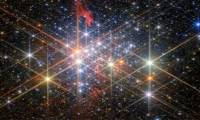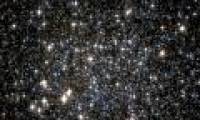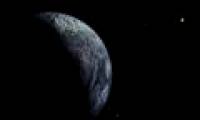
After years of being obscured by dust and gas, the largest young supercluster in the Milky Way - Westerlund 1 - has finally been discovered by the James Webb Space Telescope

NGC 6231, located about 5,200 light years from Earth, is an ideal test to study a cluster of young stars, at a critical stage in its evolution.

Based on computer simulations, scientists discovered that the globular cluster area NGC 6101 contained hundreds of black holes.

The astrophysics team at the Harvard-Smithsonian Center (USA) has come up with an interesting hypothesis, whereby billions of stars in the Milky Way have a habit of catching the
 After years of being obscured by dust and gas, the largest young supercluster in the Milky Way - Westerlund 1 - has finally been discovered by the James Webb Space Telescope
After years of being obscured by dust and gas, the largest young supercluster in the Milky Way - Westerlund 1 - has finally been discovered by the James Webb Space Telescope NGC 6231, located about 5,200 light years from Earth, is an ideal test to study a cluster of young stars, at a critical stage in its evolution.
NGC 6231, located about 5,200 light years from Earth, is an ideal test to study a cluster of young stars, at a critical stage in its evolution. Based on computer simulations, scientists discovered that the globular cluster area NGC 6101 contained hundreds of black holes.
Based on computer simulations, scientists discovered that the globular cluster area NGC 6101 contained hundreds of black holes. The astrophysics team at the Harvard-Smithsonian Center (USA) has come up with an interesting hypothesis, whereby billions of stars in the Milky Way have a habit of catching the
The astrophysics team at the Harvard-Smithsonian Center (USA) has come up with an interesting hypothesis, whereby billions of stars in the Milky Way have a habit of catching the Do signals from extraterrestrial civilizations detected by Sky Eye really exist?
Do signals from extraterrestrial civilizations detected by Sky Eye really exist? 'City without air conditioning' in China: People don't know what heat is!
'City without air conditioning' in China: People don't know what heat is! The element of the sun god is giving scientists a headache
The element of the sun god is giving scientists a headache Unique Village: Roofs Become Roads for Residents!
Unique Village: Roofs Become Roads for Residents! Top 7 strange psychological effects of the brain that we all have without knowing
Top 7 strange psychological effects of the brain that we all have without knowing Which is the most terrifying bedroom elixir in Chinese history?
Which is the most terrifying bedroom elixir in Chinese history? Earth's core may start rotating in reverse
Earth's core may start rotating in reverse A day in Japan can be up to 30 hours long, does this country live in a different 'timeline'?
A day in Japan can be up to 30 hours long, does this country live in a different 'timeline'?